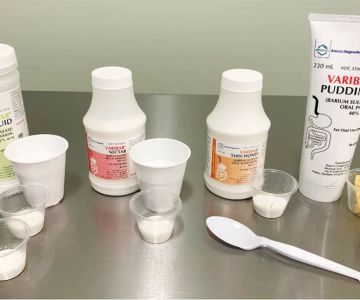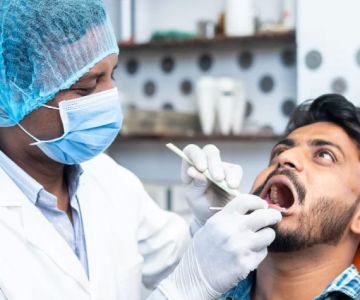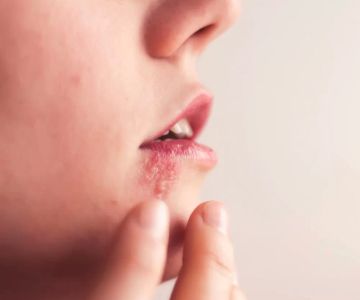Understanding the Importance of Checking Temperature with an Oral Thermometer
Measuring body temperature accurately is vital for monitoring health, detecting fevers, and making timely medical decisions. An oral thermometer is one of the most common and reliable tools used in homes and clinics across the United States. Knowing how to check temperature with an oral thermometer correctly can make a significant difference in getting precise readings and understanding your body’s condition.
Oral thermometers are favored because they provide a good balance of accuracy, convenience, and affordability. Unlike ear or forehead thermometers, oral thermometers measure the temperature inside the mouth, offering a core temperature that reflects the body’s true heat level. This makes it an ideal method, especially when used properly.
How to Prepare for Taking an Oral Temperature
1. Choose the Right Thermometer
First, select a reliable digital oral thermometer. Digital models have replaced traditional mercury thermometers due to safety and ease of use. Some advanced thermometers offer quick readings and memory recall, which can be helpful for tracking changes over time.
2. Clean the Thermometer
Before use, ensure the thermometer tip is clean. Wash it with warm soapy water or wipe it with an alcohol swab. Proper hygiene prevents cross-contamination and ensures accurate measurements.
3. Avoid Certain Activities Before Measurement
To avoid false readings, avoid eating, drinking hot or cold beverages, smoking, or vigorous physical activity for at least 15 minutes before taking your temperature. These factors can temporarily alter mouth temperature and affect accuracy.
Step-by-Step Guide to Checking Temperature with an Oral Thermometer
1. Positioning the Thermometer
Place the tip of the oral thermometer under the tongue, towards the back of the mouth on either side. This location is ideal because it reflects blood flow from arteries that are close to the skin and can provide a stable temperature reading.
2. Close the Mouth and Remain Still
Gently close your lips around the thermometer to keep it in place. Avoid biting or moving your tongue excessively, as this can disrupt the reading process. Remain still and breathe through your nose.
3. Wait for the Thermometer to Signal Completion
Most digital oral thermometers beep when the reading is complete, usually within 10 to 60 seconds. Avoid removing the thermometer prematurely, as it can result in an inaccurate measurement.
4. Read and Record the Temperature
Once the thermometer signals, remove it from your mouth and note the reading immediately. This helps track trends and communicate information accurately if consulting a healthcare professional.
Common Mistakes to Avoid When Using an Oral Thermometer
Many people unintentionally compromise the accuracy of their temperature readings. Some common pitfalls include:
- Not waiting the recommended time after eating or drinking.
- Placing the thermometer incorrectly in the mouth.
- Moving or talking during the measurement.
- Using a thermometer that is dirty or not properly calibrated.
Being mindful of these mistakes can help you avoid frustration and ensure consistent results.
What the Temperature Reading Means: Understanding Oral Temperature Ranges
Normal oral body temperature typically ranges from 97.6°F to 99.6°F (36.4°C to 37.6°C). A reading above 100.4°F (38°C) usually indicates a fever and may warrant further medical evaluation.
It's important to consider other symptoms and the context of the reading, as factors like age, time of day, and individual variability can influence body temperature. Always consult a healthcare provider if you are uncertain or if a fever persists.
Real-Life Story: How Accurate Temperature Checks Helped Detect Illness Early
Emily, a mother from Ohio, shares her experience using an oral thermometer to monitor her young son’s health during flu season. After noticing he felt unusually warm, Emily carefully followed the steps to check his temperature with an oral thermometer. The precise reading helped her identify a developing fever early, prompting a timely visit to the doctor and preventing complications.
Her story highlights the value of accurate temperature measurement in making informed health decisions.
Advanced Tips for Using Oral Thermometers Effectively
1. Use a Protective Sheath
Many oral thermometers come with disposable covers that enhance hygiene and prevent cross-contamination, especially when measuring multiple people’s temperatures.
2. Keep Track of Readings
Maintaining a log of temperature readings can help spot trends or improvements. Some digital thermometers even sync with apps for easy tracking.
3. Consider Alternatives for Certain Populations
While oral thermometers are ideal for adults and older children, infants and those unable to hold the thermometer properly may require rectal or ear thermometers for accuracy.
If you want reliable tools and expert advice on oral thermometers and temperature monitoring, visit Dentistry Toothtruth to find the best products and services tailored for your needs.







 Small World Dental - Pediatric Dentist and Orthodontist4.0 (1469 review)
Small World Dental - Pediatric Dentist and Orthodontist4.0 (1469 review) Loma Linda University School of Dentistry3.0 (154 review)
Loma Linda University School of Dentistry3.0 (154 review) West Covina Dental Group and Orthodontics4.0 (274 review)
West Covina Dental Group and Orthodontics4.0 (274 review) Kelly McNally Passarelli DDS5.0 (138 review)
Kelly McNally Passarelli DDS5.0 (138 review) SoCO Smiles Orthodontics4.0 (187 review)
SoCO Smiles Orthodontics4.0 (187 review) Generation Family Dental. (Dr. Kailing S. Wu, DDS)4.0 (19 review)
Generation Family Dental. (Dr. Kailing S. Wu, DDS)4.0 (19 review) The Importance of Oral Health Education During Pregnancy for a Healthy Pregnancy
The Importance of Oral Health Education During Pregnancy for a Healthy Pregnancy Best Tips for Brushing Your Teeth Properly for Healthy Gums: Essential Techniques for Oral Health
Best Tips for Brushing Your Teeth Properly for Healthy Gums: Essential Techniques for Oral Health Why Skipping Dental Checkups Can Lead to Bigger Oral Health Problems
Why Skipping Dental Checkups Can Lead to Bigger Oral Health Problems Advantages of Porcelain Dental Restorations
Advantages of Porcelain Dental Restorations How Can Diabetes Cause Tooth and Gum Problems? Preventing and Managing Oral Health Issues
How Can Diabetes Cause Tooth and Gum Problems? Preventing and Managing Oral Health Issues Healthy Habits for Promoting Good Oral Health and Hygiene: Tips for a Healthy Smile
Healthy Habits for Promoting Good Oral Health and Hygiene: Tips for a Healthy Smile